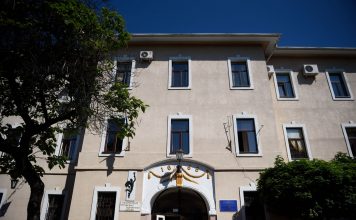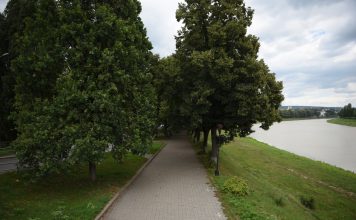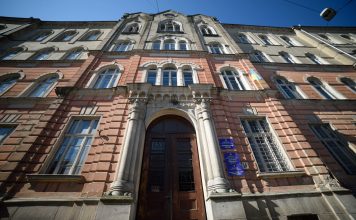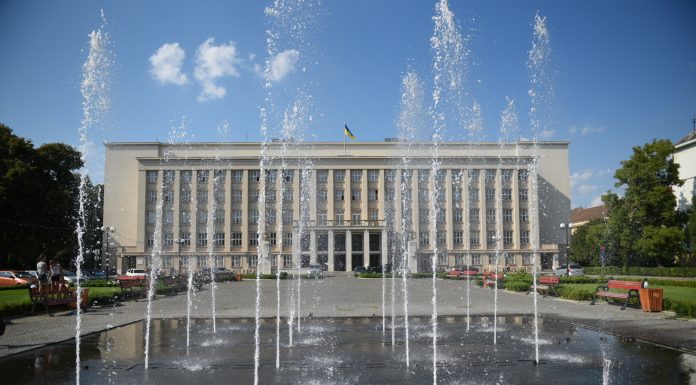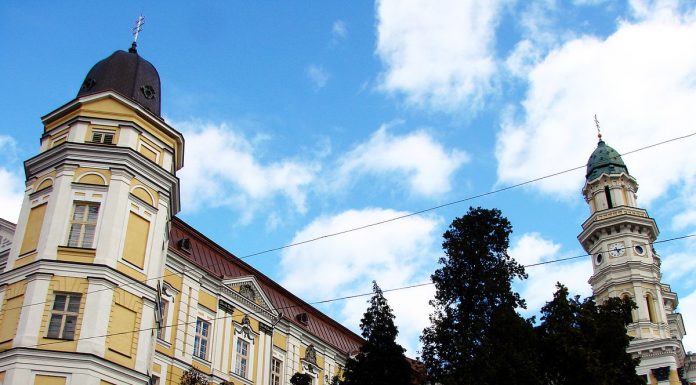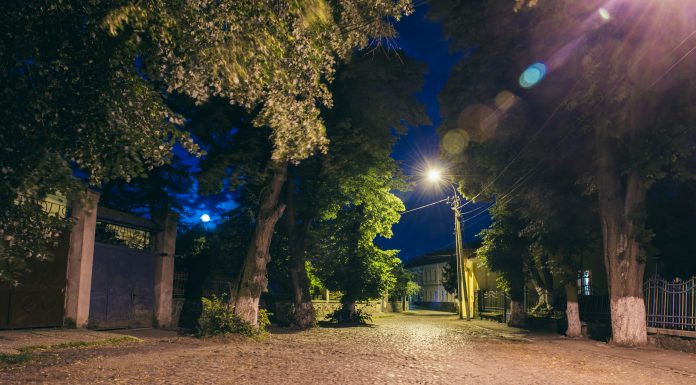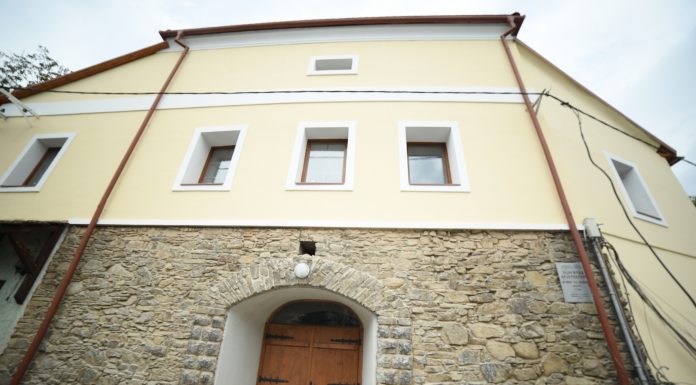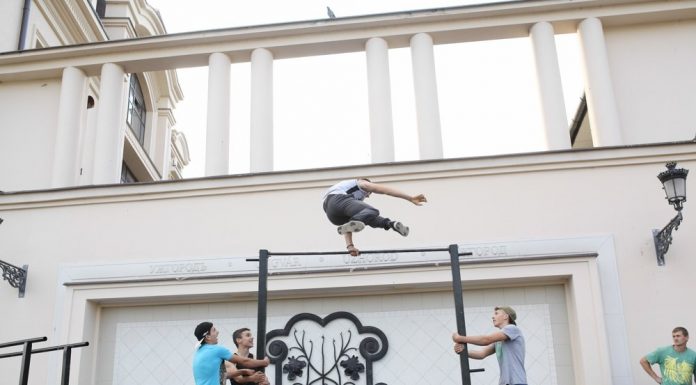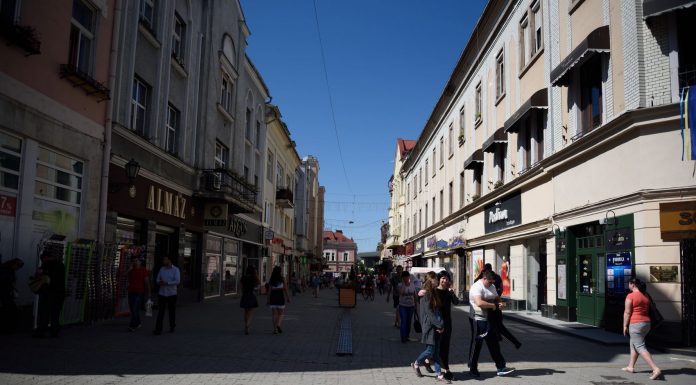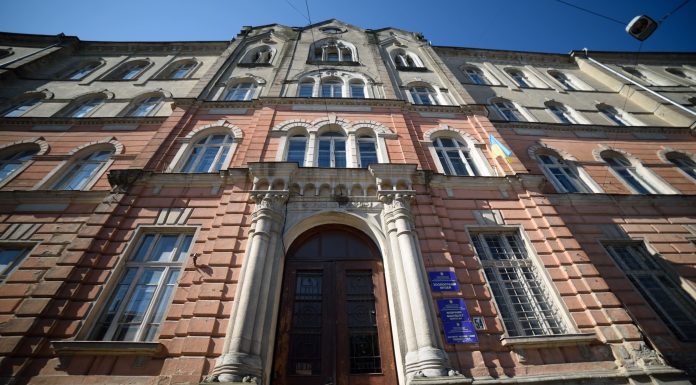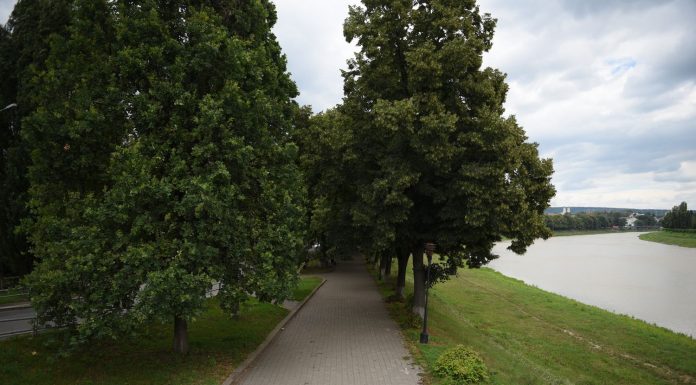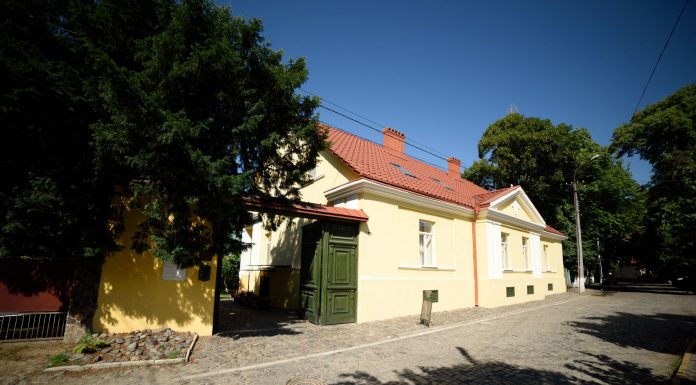Dominated by the regional administration building at one end, since 1999 the square has been decorated with a large statue of Ukraine’s national poet, Taras Shevchenko. In 2001 a grass lawn was installed, with lights. In 2011 a fountain was re-installed. On the left side of the square, there’s a rose garden and right behind it is the building...
Next to the Cathedral is the Episcopal Palace, which is an imposing historical and architectural monument of 18th century Uzhgorod. The plan of the palace is L-shaped, with two octagonal towers at the top. The western facade is decorated with a portico and a stucco coat of arms of Bishop Bachynskyi.
The history of the Episcopal Palace is inseparable from...
It is the oldest street of Uzhgorod. It was the only street located within the outer fortifications of the castle. In the 17th century it consisted of about 10 households. In the early 19th century the name “Kapitulna” was gradually assigned to the street because of Capitol which was located at the beginning of the street, near houses where...
The building was constructed in 1781. At first, the premises were used to store food and drinks, but after the original brewery located there closed, it was transformed into a hotel, later into a technical school and carpenter school. After Transcarpathia became part of Czechoslovakia, a wine bar was opened in the “Owl’s nest”. By the end of the...
The program of this festival features various performances of individuals and teams from Workout, demonstrations, entertaining contests, competitions and more.
Events like these give flavour to the everyday life of our home town and enable local youth to feel the taste of a healthy life with well-known stars of weightlifting.
Reformation church – is a historical and architectural monument of the 18th century. It situated near local zhupanat. It is located on the highest part of the hill. The temple was built at the end of 1790's. The foundation of the Reformed Church was laid on 16 May 1793. The activity of Dierd Geder who was a preacher promoted...
Korzo Street – is one of the oldest streets in Uzhgorod. The name is derived from Italian language and translated as “street where people promenade”. Korzo obtained its name in the times of Drugets. That street also was named Mostova and further dedicated to Hungarian writer Ferenc Kazintsi (1759-1831). In the early XX century there lived rich European craftsmen...
Vasilian monastery was built to educate Vasilian monks and Ukrainian children. Project of the building was developed by Uzhgorod architect Ernest Kovosh. Originally a monastery, whose facade overlooked the street, had four-storey central and side parts, where Hanging Gardens were situated.
It was the highest building in Uzhgorod till the First World War. In 1947 the building was transferred to...
Active cultivation of the right bank embankment began after the First World War. Now it is called "Independence". In 1928 the Czech botanists have collected and planted there different varieties of linden, so that avenue blooms all summer. Linden alley - is a monument of landscape art of local importance in Ukraine. It is run by the Uzhgorod municipality....
It is the oldest street of Uzhgorod. It was the only street located within the outer fortifications of the castle. In the 17th century it consisted of about 10 households. In the early 19th century the name “Kapitulna” was gradually assigned to the street because of Capitol which was located at the beginning of the street, near houses where...

